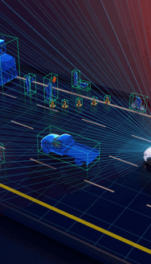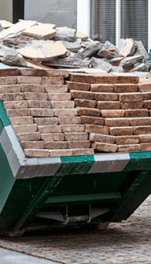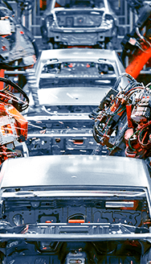Flow meters: measuring gas or liquid flows
Flows are usually associated with liquids or gases. The first option for measuring liquid flows is a mechanical method. At the gas station you may still come across paddlewheel flow meters, which rotate behind a viewing glass as gas passes through at a gas pump. The number of revolutions is directly related to the amount of liquid passing through. Most mechanical flow meters use the same method. A traditional domestic water meter also contains one of these rotating wheels.
Ultrasound to measure flow
An ultrasonic sensor is a more advanced solution. It usually consists of two elements placed on either side of a pipe. The built-in piezo crystal transmits and receives ultrasonic sound waves. The time it takes for the wave to cross the pipe depends on the flow. This is comparable to someone swimming with or against the current. By aligning the sensor elements at an angle to the current, one wave travels with the current and the other against it. The time difference in the different directions is a measure of the speed of the fluid.
The Doppler effect is a variant of this method. A single piezo element that works as a transceiver of its own ultrasonic pulses is all that’s required. The signal is reflected by the particles or bubbles in the liquid. The speed can be calculated from the shift in frequency in the sound wave.
Both of these options can be positioned so that the sensors are prevented from coming into contact with the medium, which makes ultrasonic sensors virtually indestructible.
Temperature-independent Coriolis flow meter:
The third option for measuring liquid flows is a Coriolis flow meter. This measures the mass flow based on the deformation of the tube through which part of the liquid is sent. An important advantage of this method is that it works independently of the temperature. This is useful in situations such as when filling a tanker truck, where gas quantity has to be measured without being affected by the prevailing weather conditions.
All of these flow meters are commonly used in the process industry. OEMs rarely incorporate them into their machines as they are too expensive.
Gas flow meters, on the other hand, are different. These are commonly used to control processes in industrial applications. A special paddlewheel for gases can also be used, but a measurement based on temperature is usually preferred. These sensors are made of silicon and contain a hot wire and two temperature sensors. Heat is transferred from the wire to the gas, which reduces the temperature of the wire. The difference between the two temperature measurements is a measure of the flow. This produces a result that is accurate to milliliters per minute. Please note that the sensor has to be set for the appropriate gas. The thermal behavior of air, for example, is different to that of natural gas.
Coming soon: flowmeters
Achter de schermen wordt hard gewerkt om de flowmeters voor te bereiden voor plaatsing in onze online sensordatabase. Wil je nu meer weten over de technische specificaties van flowmeters? Dat begrijpen we. Ondertussen kan je informatie opvragen bij onze sensorexperts. Stuur een e-mail met jouw vraag.






